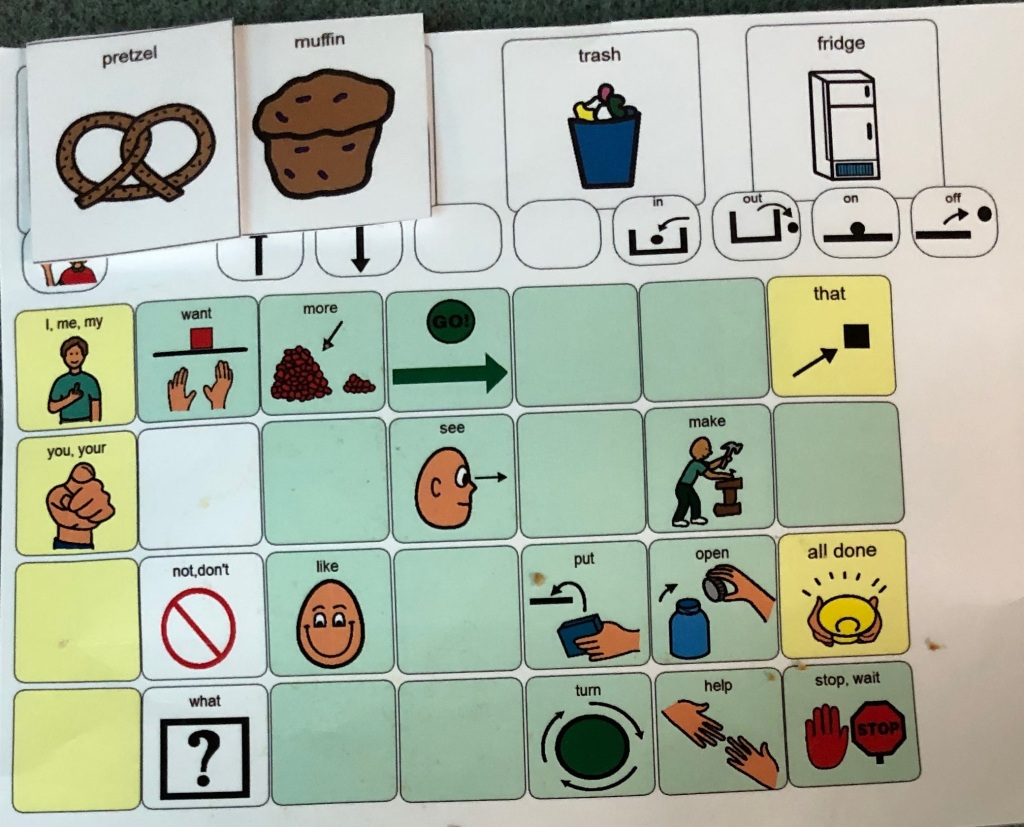AAC does not stop at the end of the school day. It NEEDS to be generalized across all settings. This doesn’t just entail private therapies but also in your home and community!

Every time you are asking a question, talking about an event, or addressing a child that uses AAC you NEED to be implementing the device. Brushing teeth? Use AAC. Having a snack? Use AAC. Going to the grocery store? Use AAC! Every activity, as simple as it may seem, is an opportunity to practice their AAC skills.The more you model the more fluent your child will become with their expressive and receptive language.
Carrying around the device can seem daunting. However, that is your child’s voice!!! Imagine standing at the grocery store deli counter with your mouth taped shut. You can not say anything! Your voice is restricted.This is how your child is when they do not have access to their device.
Over time you may have learned how to interpret your students/child’s gestures and vocalizations so you figure you don’t need to use AAC. WRONG! Just because you understand it does not mean everyone else will. You can not always be the interpreter. We want children to work towards a goal of functional and effective communication across all settings and people. This can be achieved through AAC.
Modeling
Another HUGE component of using AAC across settings is modeling. Modeling provides a base,expectation, and reinforcement. Children learn more effectively with modeling. It may take you saying apple +300 times but on that 301st try they might get it. It can be overwhelming, and you may drive yourself nuts repeating yourself, but this is how your child will learn. Children are also more inclined to respond appropriately when presented with a model. Lets break it down in the following video using the same question.
Both times I asked the same question. However, there is something crucially different between the two. Can you spot the difference? If you guessed modeling you are correct! Student’s are more inclined to respond/attend appropriately when given a verbal prompt accompanied by a model. The first time I asked “ what do you want?” it was without the model and the student did not respond. When the same question was asked with the model the student responded.
Quick TIP: Children are more apt to preform when they are seated and the device is upright. You can simply use a book holder like the one here.
AAC and modeling at home are imperative for your child’s success! Students need to constantly be bombarded with language to learn! To lean more about AAC and aided language simulation check out this post.
